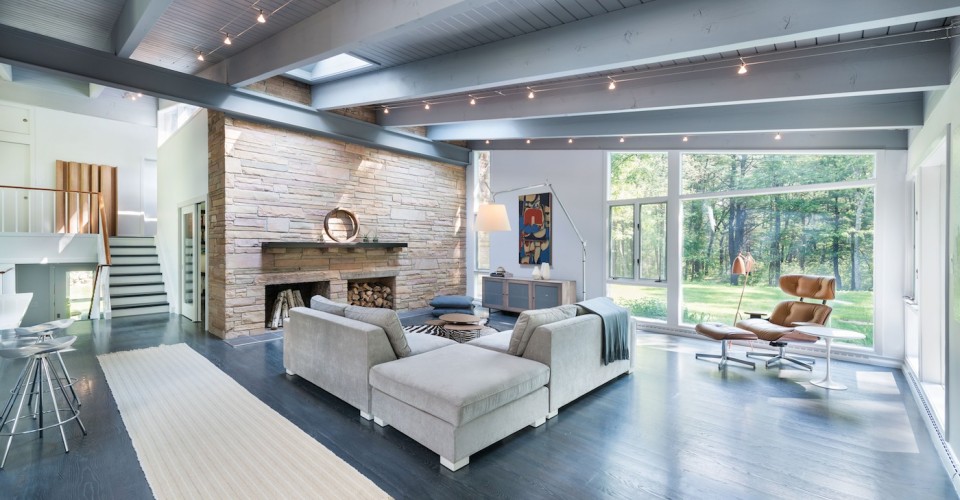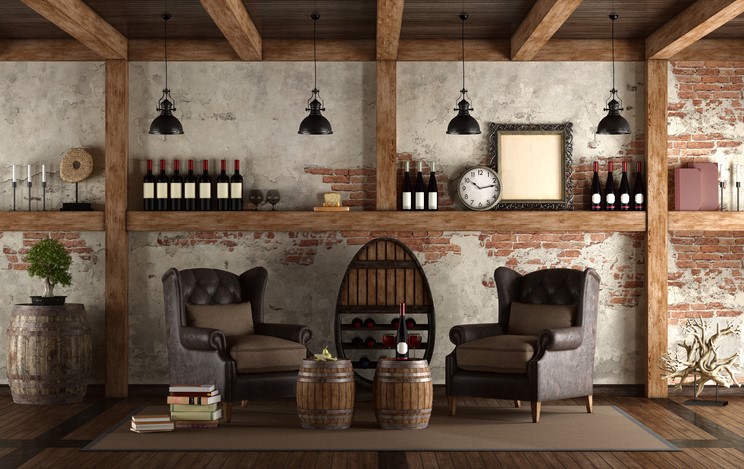Your living room remodel may involve fresh paint and new furniture or it may specify moving walls and renovating the fireplace. Choosing to do these upgrades yourself may be a matter of what changes you want to make plus how skilled you are at renovating. Hiring a professional may be the best option for homeowners lacking time or skill. Let’s take a look at which living room remodel projects might be easy to tackle on your own, and which projects should be left to the pros.
Typical living room remodel projects
Remodeling the living room may involve a variety of aspects. The living room is generally the main room for socializing, both with the family as well as friends and neighbors. Most living rooms are placed on the main floor, sometimes adjacent to the dining room or kitchen. Some homes have both a formal living room as well as a family room; other homes may have one room that they use for both purposes. Regardless of your particular style or architecture, here are some common upgrades for the living room:
- fireplace renovation: new insert, renovate the fireplace surround, new mantle, change from wood burning to gas powered
- walls and ceiling: remove texture, new paint, patching and repair work
- flooring: refinish hardwood floors, new flooring, new carpeting, fix squeaks or damaged areas
- windows: replace windows with energy efficient models, new window treatments
- electrical: new lighting fixtures, adding recessed lighting, adding scones or specialty lighting, upgrade outlets, upgrade light switches, install dimmers, install fan
- furniture and decor: replace or upgrade furniture, hang artwork, new furniture layout
- detail work: add crown molding, new baseboard trim
- entryways: new doors, widen entry points or move walls
- mechanical: upgrade HVAC, other mechanical issues
Pre plan your living room remodel
The most important part of a living room remodel is the pre-planning stage. Make a master list of every task you’d like done and who should do the work. This is the time to be very honest with yourself and your abilities. For minor remodeling projects it’s common for a homeowner to do some of the work themselves and hire a professional to do the rest. If you want to hire a pro to do some minor work, maximize their time on site by having everything ready. For example, if you hire an electrician by the hour, be sure you have all necessary parts on hand so time isn’t wasted traveling to the hardware store. For major remodels that might involve moving walls or demolition, or if you are working on a very old home with ancient electrical system, hiring a general contractor, architect or interior designer may be your best bet. A professional can hire the subcontractors, manage the timeline, watch the budget and obtain necessary permits.
Projects to do yourself
There are many living room remodel upgrades that can be easily done on your own. If you are confident with DIY projects and have the necessary tools on hand, you might find that you can knock out several of these over the course of a weekend. New paint, rearranging the room, new cover plates or repainting old fireplace brick can be done rather inexpensively.
There are some updates, however, that may become more involved than you planned. For example, adding dimmer switches to the room may seem like a simple, inexpensive upgrade. But sometimes our home’s electrical systems have other issues that you weren’t aware of, and you may find that you’ve started a project only to have to call in a professional. Don’t worry, experts are there to help.
Projects best left to a professional
In general, projects that require licensing or certification (gas line installation, electrical, fireplace, window replacement) should be left to a pro. You may have splurged on expensive, energy efficient windows however, installing them incorrectly won’t save you energy costs at all. Laying down new flooring may seem straightforward however, you may not have the experience to realize that your sub flooring requires reinforcement.
Home improvement projects may require a permit to ensure that your project is being built up to current residential building codes. If you plan on switching your wood burning fireplace to a gas operated fireplace, you will most likely need a permit. You can do the permit research yourself by inquiring at your local department of planning and development, or you can hire a licensed professional to obtain the permits for you.
Saving time and money
Usually the biggest reasons why homeowners choose to DIY is to save money and learn new skills. There are some projects where this may be true however, keep in mind your commitment to the project and your time. For example, you may be capable of painting the living room yourself however, if you had to purchase all new supplies and tools, and spent several hours trying to find the correct shade of white, you may end up feeling frustrated. Conversely, if you want to try your hand at stenciling or faux finishing the living room walls, and want to invest in the tools and time, then doing this project yourself might be the perfect opportunity to learn. Choose your battles carefully and understand your motivations before you dive into a project.
Top image credit: Flavin Architects




